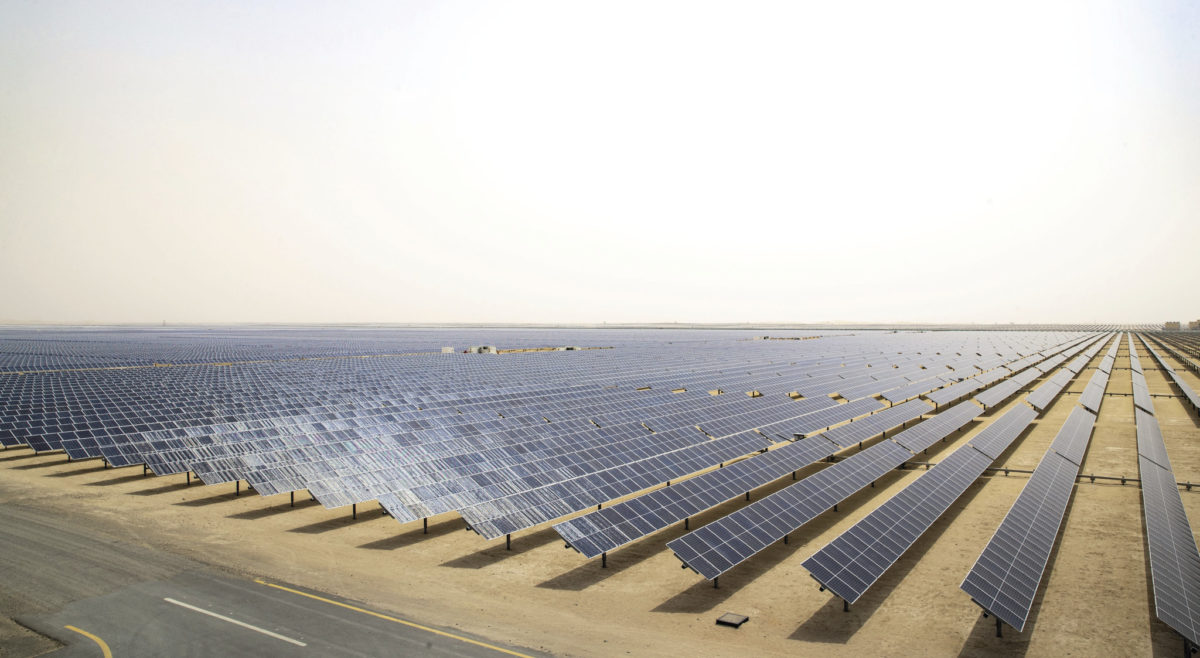A report into the global flow of capital into the energy transition has revealed plans for Vietnam's largest solar park, the Xuan Thien Ea Sup project in Dak Lak, to be expanded to 2.8 GW of generation capacity “by early 2022.”
The Global Investors Move Into Renewable Infrastructure report published on Monday by Cleveland-based thinktank the Institute for Energy Economics and Financial Analysis (IEEFA) revealed the expansion plans outlined for the 831 MW project, as announced by developer Xuan Thien Group.
Chinese panel supplier Longi Solar announced the 273 MW first phase of the VND20 trillion ($869 million) project had been completed five months ahead of schedule in November, after construction had started in April last year.
pv magazine print edition
Pick up your copy of pv magazine today for an in-depth look at solar’s vital role in securing energy supply where conventional grids have struggled to reach. And don’t miss our In Conversation special: Over the past month, we have been in touch with leading researchers working on energy systems, solar cell technologies, battery storage, hydrogen and more; discussing the future of energy and the technologies we can expect to see a whole lot more of in the coming years.
The insight into the Dak Lak mega project was included in a report which highlighted ten “globally significant” renewables infrastructure projects of 2020 as well as examining the ten best performing commercial banks which lent to energy transition projects and a selected group of 25 equity investors which IEEFA feels are leading the way in clean energy commitments.
The section devoted to 2020 renewables projects also revealed the then-world-record low price for solar of $0.0135/kWh produced by the 2 GW Al Dhafra solar project near Abu Dhabi, announced in July last year, has subsequently fallen even further, thanks to cheap finance costs and currency hedging, to hit $0.0132/kWh. The original Al Dhafra tariff was undershot by the $0.0104/kWh agreed for the 600 MW Al Shuaiba project in Saudi Arabia, which was announced in April.
The 900 MW, $400 million Phalodi-Pokhran project being planned by the SB Energy developer owned by Indian conglomerate Adani Group in Rajasthan was also noted by IEEFA, as well as the 26 GW Asian Renewable Energy Hub project in Pilbara, Australia, which has hit environmental permitting trouble; LS Power's 25 MW/25 MWh Gateway Energy Storage, lithium-ion battery project in San Diego County; and the 3.6 GW pumped hydro storage plant being planned in Hubei province, China, which would supplant the 3 GW/24 GWh facility in Bath County, Virginia, in the U.S., as the world's biggest such asset.
Popular content
While reporting a 9% rise in energy transition investment last year, to $501 billion, according to data provided by analyst BloombergNEF, the IEEFA study indicated the renewable energy generation capacity proportion of that total, at $303 billion, had risen only 2% from 2019, as investment in other areas such as e-mobility, green hydrogen, energy storage and heat pumps gathered pace. Solar accounted for $147 billion of the energy transition backing recorded by the study for 2020.
The document reported all of the $9 billion of debt and equity investment in energy transition projects in Brazil last year went to renewables generation capacity, which also accounted for the major spend seen in China (which attracted $135 billion in energy transition debt and equity investment), the U.S. ($85 billion), Japan ($27 billion), the U.K. ($26 billion), the Netherlands ($19 billion), and Spain ($13 billion). In Germany (which attracted an energy transition total of $29 billion in debt and equity), France ($20 billion) and Norway ($9 billion), however, investment in electric mobility and charging infrastructure – including electric vehicle purchases – accounted for a bigger slice than renewables capacity. The report also noted a 20% annual fall in such funding commitments in the U.S., to $49 billion.
Lenders
Sumitomo Mitsui Banking Corp led the energy-transition-lending commercial bank ranking compiled by IEEFA from the BloombergNEF Clean Energy League Table 2020, by offering an estimated $4.25 billion of such finance in 2020, and was one of three Japanese institutions among an otherwise European top 10, with U.S. lenders notable by their absence.
With French lender Credit Agricole Group ninth on that list, having loaned an estimated $1.89 billion, another member of the group, the Amundi Asset Management entity, was among the equity investors selectively highlighted for praise in the IEEFA report.
This content is protected by copyright and may not be reused. If you want to cooperate with us and would like to reuse some of our content, please contact: editors@pv-magazine.com.



3 comments
By submitting this form you agree to pv magazine using your data for the purposes of publishing your comment.
Your personal data will only be disclosed or otherwise transmitted to third parties for the purposes of spam filtering or if this is necessary for technical maintenance of the website. Any other transfer to third parties will not take place unless this is justified on the basis of applicable data protection regulations or if pv magazine is legally obliged to do so.
You may revoke this consent at any time with effect for the future, in which case your personal data will be deleted immediately. Otherwise, your data will be deleted if pv magazine has processed your request or the purpose of data storage is fulfilled.
Further information on data privacy can be found in our Data Protection Policy.